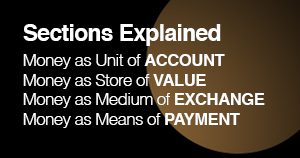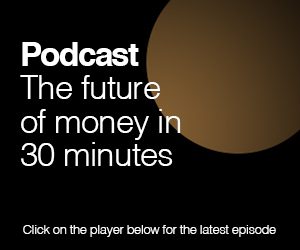The UK’s central bank is preparing for a once-in-a-lifetime reordering of the monetary system as a result of the arrival of new forms of digital money.
In a discussion paper published on June 7, the Bank of England said the emergence of new forms of private money, such as stablecoins, as well as new central bank digital currency (CBDC), may fundamentally change the way finance operates in the UK.
What are stablecoins and CBDCs?
Private stablecoins are digital versions of existing fiat money, like the pound, dollar, euro or yen, issued by private sector entities and backed by reserves.
However, stablecoins promise a range of enhancements over existing forms of digital money, such as electronic deposits held in bank accounts.
For example, stablecoins may underlie ‘smart’ contracts (self-executing code) and settle near-instantaneously.
They may also allow frictionless online exchange around the clock, permit cross-border transfers and allow for integration with non-financial services.
The Bank for International Settlements predicted in December that stablecoin volumes might grow by ‘orders of magnitude’ over coming years.
Tech giant Facebook has been trying to launch a stablecoin since 2019 and has recently refocused its efforts on doing so in the US.
Meanwhile, unregulated or semi-regulated private sector stablecoins like Tether and Circle have grown their assets more than twentyfold since the onset of the coronavirus pandemic.
The other new form of digital money—CBDCs—is fundamentally different from private stablecoins. CBDCs are a direct liability of the central bank, rather than of a private sector entity.
Difficult trade-offs
In its discussion paper, the Bank of England outlined the difficult trade-offs involved in ensuring the functioning of a future financial system containing both stablecoins and CBDCs.
The Bank is responsible for ensuring both monetary stability—defined as a target inflation rate of 2 percent a year—and financial stability in the UK.
“New forms of digital money could be preferred by the public to commercial bank deposits, but they will endure only if they can be trusted as a store of value and as an accepted means of payment,” the Bank said.
“Stablecoins must promise, credibly and consistently, to be fully interchangeable with existing forms of money. In other words, they must be anchored.”
“This means that stablecoins must promise, credibly and consistently, to be fully interchangeable with existing forms of money. In other words, they must be anchored. This is essential for ensuring that users have the same confidence in stablecoins as commercial bank money.”
In other words, the Bank went on, stablecoins must be subject to the same kind of rules as banks.
Specifically, it said, stablecoin issuers would need to meet capital and liquidity rules and offer deposit insurance.
The stablecoins that have grown out of the last decade’s cryptocurrency boom—notably Tether—have so far avoided any such regulation, while details on their asset backing are scant.
Tighter credit, easier payments
According to the Bank of England, the arrival of new forms of digital money could also impact the role of credit provision. Currently, around 80 percent of money in the UK comes into existence as a result of bank loans.
“A large-scale displacement of commercial bank money by new forms of digital money could mean a higher fraction of money in the economy backed by high-quality liquid assets (HQLA) rather than by loans to the real economy,” the Bank said in its discussion paper.
“In that event, real economy loans could be financed instead by more stable, and expensive, sources of funding, reducing the efficiency with which commercial banks extend credit. As a result, there could be a greater reliance on non-banks for credit provision.”
However, the potential for a reduction in the availability of credit should be set against the gains promised by new digital payment services, the Bank went on.
“Overall, there may be a trade-off between the optimal provision of transaction services—that is, payments—and intermediation services, that is, credit,” the Bank said.
“On the one hand, the introduction of new forms of digital money may improve the range of transaction services available to people. On the other hand, it might reduce the efficiency of credit provision in the economy.”
Who’s in charge?
In its discussion paper, the Bank also admitted the challenges new money has created for regulators by crossing existing demarcation lines between government agencies.
“New forms of digital money raise important issues that cut across the responsibilities of a number of UK authorities,” it said.
“While the Bank supervises systemic payment systems as part of its financial stability objective, the Financial Conduct Authority (FCA) is the sole regulator for a range of other payment firms.”
“In addition, the Payment Systems Regulator (PSR) is the economic regulator of the payments industry,” the Bank went on.
“In future, under the proposed approach of Her Majesty’s Treasury (HMT) to stablecoin regulation, the Bank would regulate systemic stablecoins. Matters in relation to consumer protection and to rules around conduct would fall within the responsibility of the FCA.”
The Bank is asking for feedback to its paper by September 7.
Sign up here for the New Money Review newsletter
Click here for a full list of episodes of the New Money Review podcast: the future of money in 30 minutes
Related content from New Money Review









